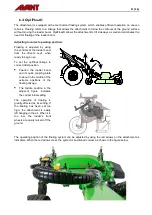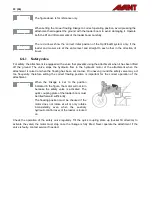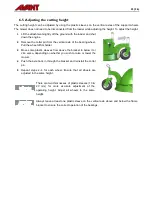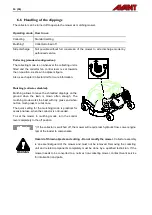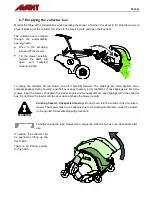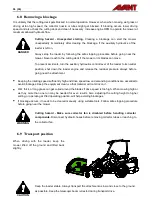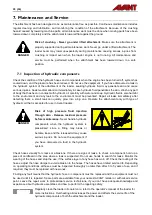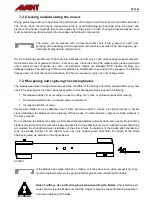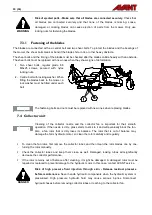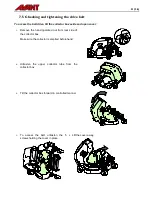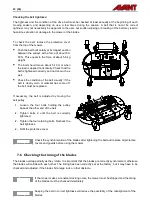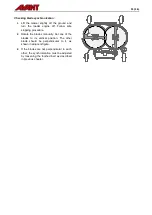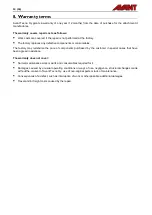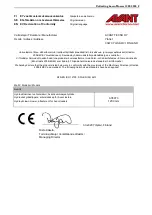
32 (36)
Checking the belt tightness:
The tightness and the condition of the drive belt must be checked at least annually at the beginning of each
mowing season, and depending on use, a few times during the season. A belt that is not at its correct
tightness may not necessarily be apparent to the user, but sudden slipping or breaking of the belt may lead to
hazardous situation or damage to the mower or the blades.
To check the belt, remove the protective cover
from the top of the mower.
Push the belt horizontally at its longest section
between the pulleys with a force of about 50-
80 N. This equals to the force of about 5-8 kg
weight.
The belt should move about 5-10 mm when
the load is applied horizontally. Check that the
belt is tightened correctly and not too much as
well.
Check the condition of the belt visually; if the
belt is clearly worn or material has come off,
the belt must be replaced.
If necessary, the belt is adjusted by moving the
belt pulley.
1.
Loosen the four bolts holding the pulley
base at the other end of the belt.
2.
Tighten bolts 2, until the belt is correctly
tightened.
3.
Tighten the four retaining bolts. Recheck the
belt tightness.
4.
Refit the protective cover.
Check the synchronization of the blades after tightening the belt and replace all protective
covers and guards before using the mower.
7.6
Checking the timing of the blades
The blades overlap partially as they rotate. It is important that the blades are correctly synchronized; otherwise
the blades will collide with each other. The timing has been correctly set at the factory, but it may have to be
checked and adjusted, if the blades hit a large rock or other obstacle.
If the mower makes a constant clacking noise, the mower must be stopped and the timing
of the blades must be checked immediately.
Keeping the belt in correct tightness will reduce the possibility of the misalignment of the
blades.
Summary of Contents for A35973
Page 2: ...Collecting Lawn Mower 1200 2020 2 ...
Page 36: ......




